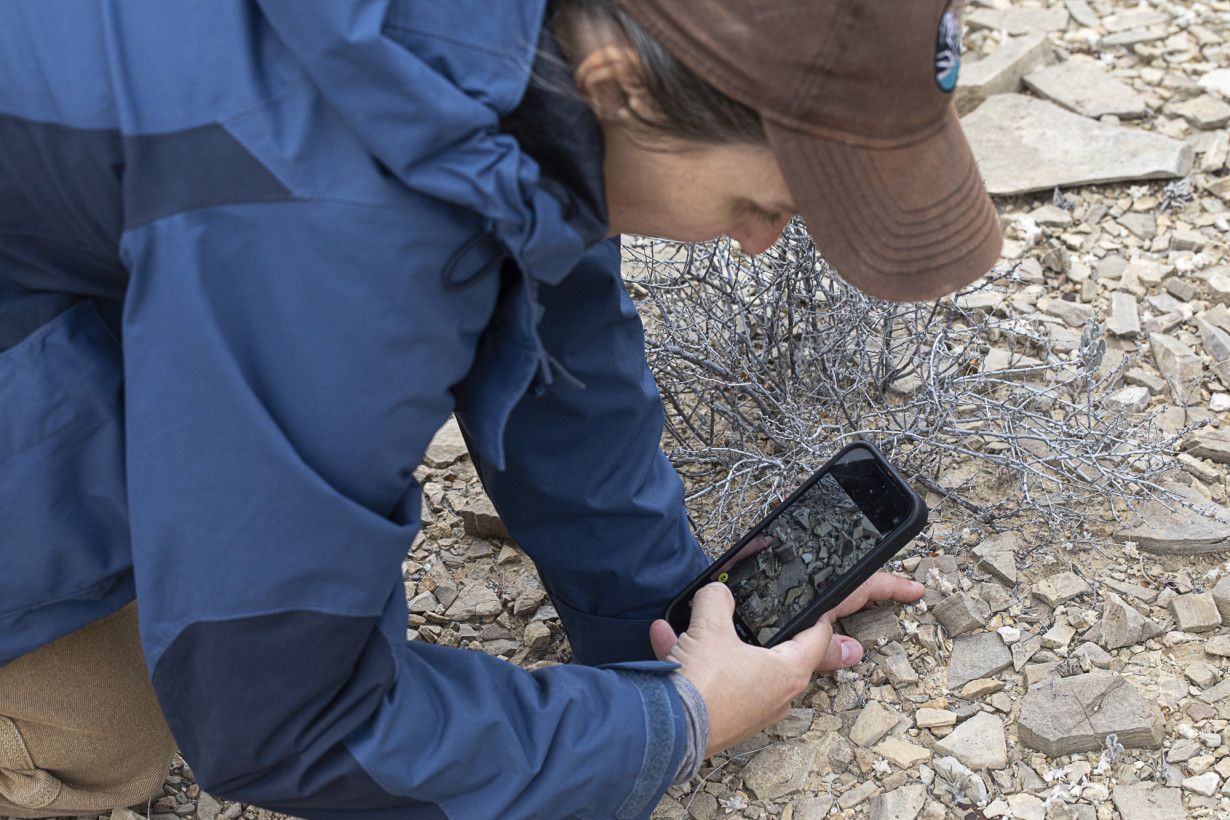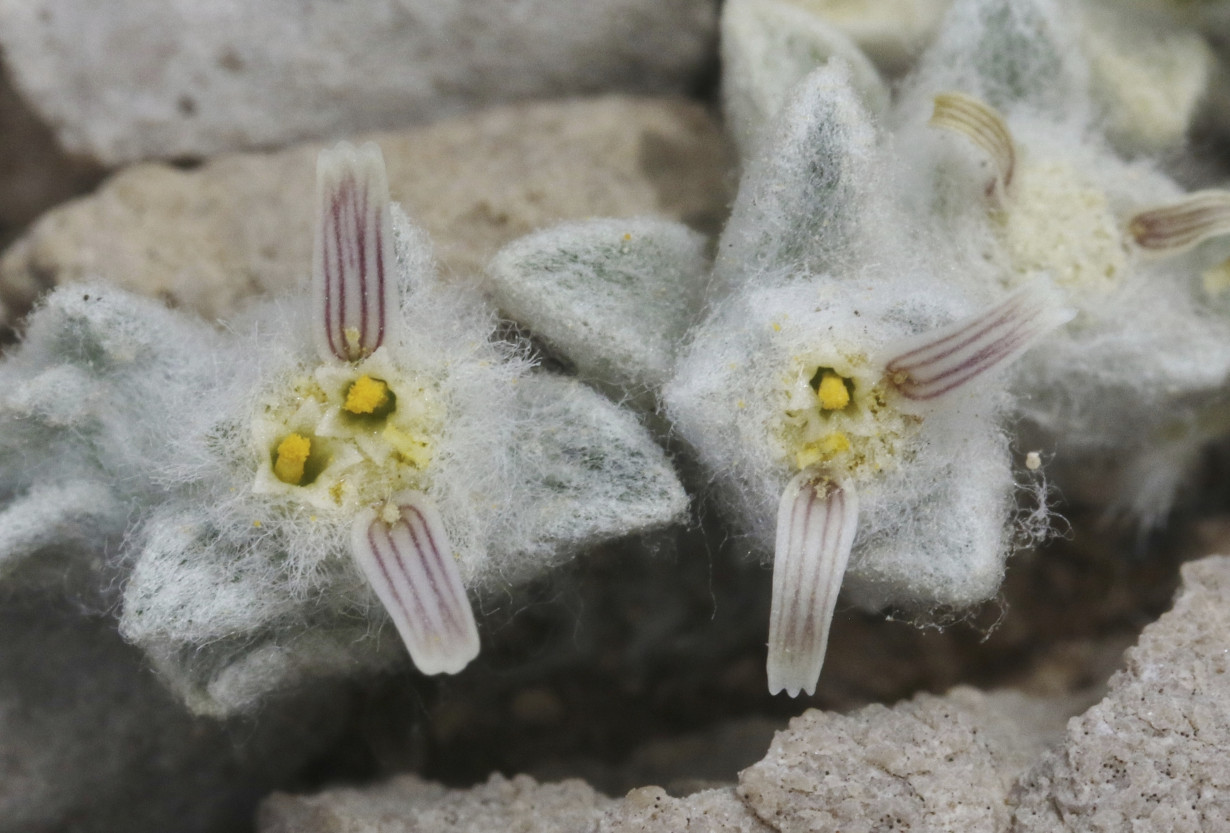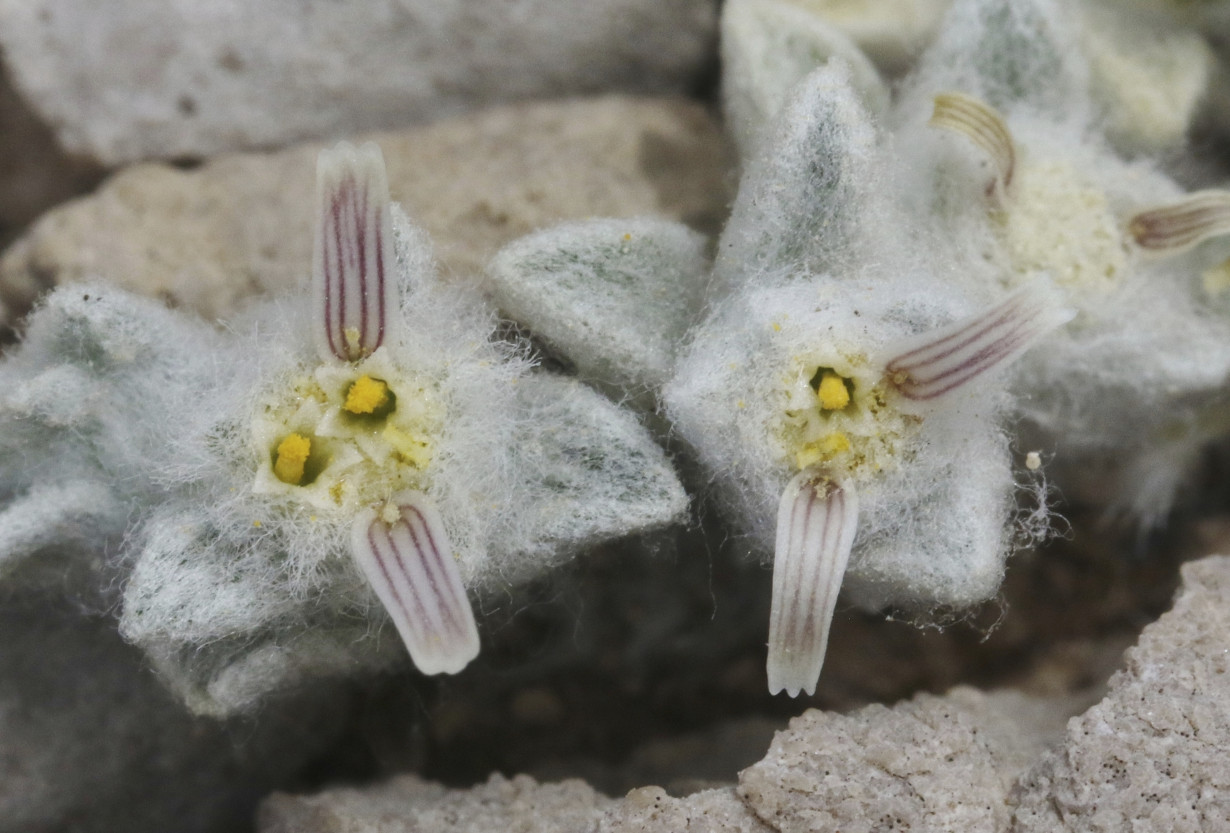DALLAS (AP) — Scientists who want to learn more about a tiny flower recently discovered in West Texas are hoping it will bloom again in a couple of weeks after rain finally fell in the area.
Dubbed the wooly devil, the flower with furry leaves, purplish-striped petals and pops of yellow is a new genus and species in the same family as sunflowers and daisies: Asteraceae. It was discovered last year in Big Bend National Park, known for its rugged terrain of desert, canyons and mountains, on the border with Mexico.
“There’s a lot to learn with this species so they’re really just getting started,” said Carolyn Whiting, a Big Bend botanist.

Scientists are hopeful the flowers will bloom again after rain fell on the drought-stricken park last week, giving them the opportunity to learn more including when the plants germinate, Whiting said.
The flower was discovered in March 2024. Park volunteer Deb Manley and a park ranger were hiking in a remote area when they saw a patch of flowers that were smaller than a quarter and close to the ground.
“We stopped and took some photos and neither one of us had any idea,” Manley said. “I could get it to family but I couldn’t figure out any more than that. So we took photos and moved on, not realizing we had found a new genus.”
When Manley got back from the hike, she started researching what the flower could be. She soon found that not only was she stumped, but others were too. Her post about the flower on iNaturalist, an online platform for nature enthusiasts “caused a stir,” said Isaac Lichter Marck, a researcher at the California Academy of Sciences in San Francisco.

A. Michael Powell, curator and director of the herbarium at Sul Ross State University in Alpine, said when Manley contacted him about the flower, he immediately thought it was something new.
“It wasn’t anything I’d seen before,” said Powell, who has extensively studied the region.
By the time a team went to collect samples of the flower over a month after the discovery, they had already begun to wither away.
“We really got out there just in the nick of time before the specimens would have been completely dried up,” Whiting said.
The discovery of the flower was announced last month.
Lichter Marck said they were able to extract DNA from the flower but that there's still a lot to learn. He said they don’t know yet how it reproduces, or what potential uses it might have. They also need to determine if it’s endangered.
The wooly devil's official name — Ovicula biradiata — takes inspiration from its appearance: Ovicula, which means tiny sheep, is a nod to the hairs that cover its leaves; while biradiata, or bi-radial, refers to its two striped petals.
Kelsey Wogan, environmental lab manager at Sul Ross State University, said she’s excited to see if the wooly devil can be found in other places as well and what its range is.
Whiting said the park is so well-studied that finding a new species was a surprise.
“The fact that there’s still species out there that had slipped under the radar is pretty remarkable,” she said.
Wogan said part of the excitement about the flower's discovery is that it shows “there’s still new and undescribed things out there.”
“It’s the great reminder to keep your eyes open," she said, "and if you don’t know what something is, it might be completely new.”

 Trump has begun another trade war. Here's a timeline of how we got here
Trump has begun another trade war. Here's a timeline of how we got here
 Canada's leader laments lost friendship with US in town that sheltered stranded Americans after 9/11
Canada's leader laments lost friendship with US in town that sheltered stranded Americans after 9/11
 Chinese EV giant BYD's fourth-quarter profit leaps 73%
Chinese EV giant BYD's fourth-quarter profit leaps 73%
 You're an American in another land? Prepare to talk about the why and how of Trump 2.0
You're an American in another land? Prepare to talk about the why and how of Trump 2.0
 Chalk talk: Star power, top teams and No. 5 seeds headline the women's March Madness Sweet 16
Chalk talk: Star power, top teams and No. 5 seeds headline the women's March Madness Sweet 16
 Purdue returns to Sweet 16 with 76-62 win over McNeese in March Madness
Purdue returns to Sweet 16 with 76-62 win over McNeese in March Madness








